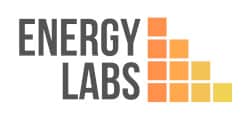For aquaculture farms, hot water can be an essential element for the survival and growth of fish and shellfish. It can help maintain a healthy balance in the environment, improve water quality and reduce mortality rates in fish and shellfish. But it can also be expensive to install, demanding to maintain, and difficult to keep at a consistent temperature.
Fortunately, the installation and use of a hot water heat pump can be an effective solution for aquaculture farms. A heat pump is a device that uses electricity to transfer heat from one place to another, making it an ideal solution for controlling water temperatures in aquaculture operations. It works by transferring energy from the air outside into the water inside the tank or pond, or vice versa depending on what kind of temperature is desired. By using this technology, aquaculture operations can save money on fuel costs as well as reduce their workload when it comes to maintaining consistent temperatures in their tanks.
Installing a hot water heat pump is relatively straightforward and requires minimal maintenance once set up correctly. The unit needs to be installed close enough to the tank or pond so that it can effectively transfer energy between them and should be securely mounted on a stable surface with no loose connections or parts that could become damaged over time. Once installed, you’ll need to adjust the settings on the unit according to your desired temperature range – usually between 20-30 degrees Celsius – and make sure everything is running properly before adding any fish or shellfish into your tanks or ponds.
When it comes to using your hot water heat pump effectively there are some key points worth considering: Firstly, you should ensure that you monitor your water temperature regularly so that you know if any adjustments need to be made; Secondly, you should try not to let your tank’s temperature drop below 20 degrees Celsius; Thirdly, if necessary you may need to invest in additional equipment such as aerators or fans which will help keep your tanks oxygenated; And finally, if you’re having trouble keeping temperatures consistent then consider investing in an additional heat source such as a solar panel which will help provide additional warmth throughout periods of lower temperatures.
Overall, hot water heat pumps are an effective way for aquaculture farms to reduce their workload while saving money on fuel costs at the same time. By following these tips and maintaining regular monitoring of their tanks’ temperatures they can ensure they’re providing their fish and shellfish with a safe environment that’s conducive to healthy growth.
